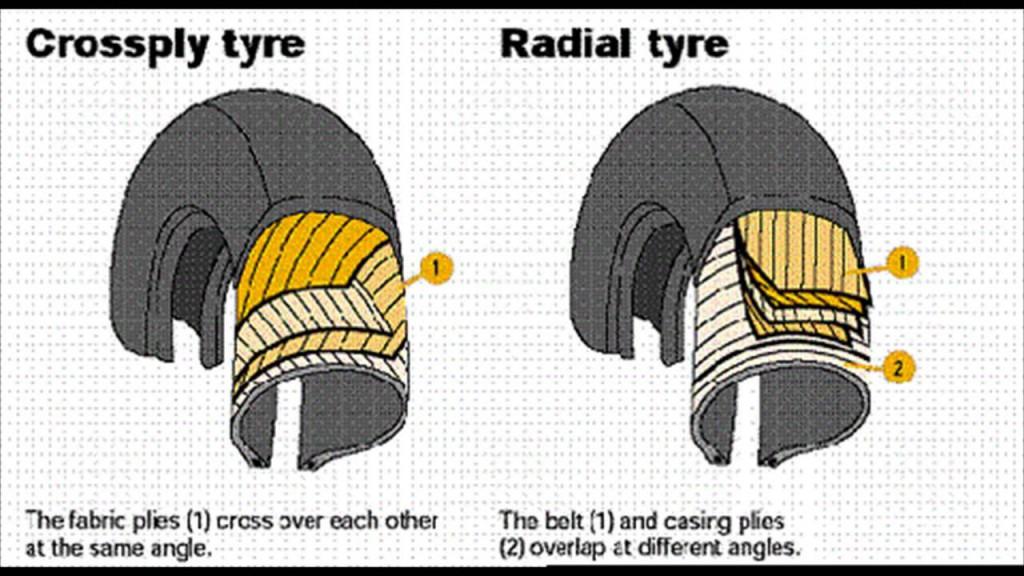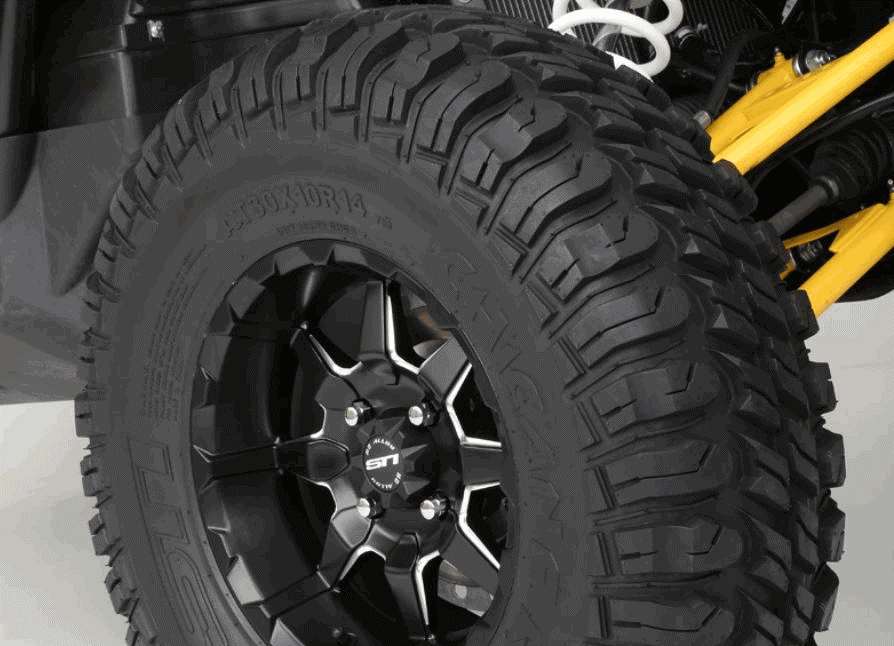Developed and commercialized by Michelin in 1946, the radial tires have revolutionized the world of tires. They are widely used in primary agricultural machines, facilitating the constant evolution of farming techniques.
There are mainly two types of tires, radial and bias, and they differ from each other in terms of their core design.
In a radial tire, the arrangement of cord plies is radial from the center of the tire or at 90 degrees to the direction of travel.
On the contrary, the arrangement of body ply cords is diagonal from bead to bead in a bias tire. The plies stay in a crisscross pattern at angles in the range of 30 to 40 degrees.
Radial Tires Advantages
Radial tires feature plenty of positive sides. Consider the following features when you have to make a choice between radial and bias tires:
- Flexible sidewalls ensure superior riding comfort
- Low fuel consumption because of smooth transition of energy from machine to ground
- Transfers more power from the machine to the ground
- Shows better resistance against tread-related damage
- Generates less heat even if the vehicle runs at high speeds
- Provides better traction
- Produces less vibration
- Less ground compaction and damage
- The tire is strong and flexible
- Absorbs shocks, bumps, and impact better than bias tires
- Offers higher comfort for users because the flexible sidewalls enhance stability and ensure maximum contact of the tire with the ground
- It has a strong-built structure so that machines can be operated at higher load capacities
- Reduces replacement costs due to better service and longer lifespan
Offers more gas mileage because of better steering characteristics and less rolling resistance - Lower maintenance costs

Radial Tires Disadvantages
The disadvantages of the tires are fewer in comparison to their positive sides. Their main disadvantages are:
- They have steel belt that does not fare well with minor bumps in the road
- Their soft sidewalls are vulnerable when vehicles collide with curbstones
- They are noisy on the road because of their harder tread
Are Radial Tires Good?
If you compare a radial tire with a bias tire, the former option is definitely better because of its safety features, flexibility, strength, and the ability to absorb shocks, impact, and bumps.
They are more expensive than bias tires, but if you consider long term, they will actually save you hassle and money.
They provide low fuel consumption, less ground damage, less rolling resistance, and their design makes them fit for longer service, leading to reduction in tire replacements.
FAQs
1. Can radial tires affect fuel efficiency, and if so, how?
Yes, radial tires can positively impact fuel efficiency due to their construction, which reduces rolling resistance.
The flexible sidewalls of radial tires allow for a more even distribution of pressure and contact with the road, leading to less energy loss during driving. This efficiency can result in lower fuel consumption compared to traditional bias-ply tires.
2. How do radial tires perform in different weather conditions?
Radial tires generally offer superior performance in a variety of weather conditions due to their tread design and rubber compound.
In wet conditions, the tread patterns of radial tires are designed to channel water away from the tire’s contact patch, reducing the risk of hydroplaning.
In dry conditions, their construction provides better grip and stability. However, for extreme winter conditions, specialized winter radial tires with appropriate tread patterns and compounds are recommended for optimal performance.
3. Do radial tires have any specific storage requirements to prevent damage?
Radial tires should be stored in a cool, dry place away from direct sunlight, ozone, and hydrocarbons (like fuel and solvents), which can degrade the rubber compound.
It’s also advisable to store them in a way that prevents deformation – either mounted on a vehicle and slightly overinflated, stacked flat if they’re off the rim, or suspended from hooks if they’re on the rims.
Proper storage extends the lifespan of radial tires by preventing premature aging and damage.
Check out this video from Michelin to learn more about what is the difference between Radial and Bias tires!
4. Can the use of radial tires impact vehicle insurance premiums?
While the type of tires on a vehicle is not a direct factor in calculating insurance premiums, using radial tires could indirectly affect insurance costs.
Since radial tires can enhance vehicle safety and performance through better grip and handling, they may contribute to a lower risk of accidents.
Some insurance companies recognize vehicles well-maintained and equipped with features that improve safety and may offer lower premiums as a result.
5. Are radial tires suitable for all types of vehicles?
Radial tires are suitable for a wide range of vehicles, including passenger cars, motorcycles, trucks, and buses, due to their versatility and performance benefits.
However, the specific type of radial tire (such as passenger, performance, or truck radial tires) should be matched to the vehicle type and usage requirements to ensure optimal performance and safety.
6. What is the environmental impact of producing and disposing of radial tires?
The production of radial tires involves the consumption of natural resources, including rubber, and energy, contributing to environmental impacts.
Disposal poses challenges due to the non-biodegradable nature of tires, which can contribute to landfill waste.
However, the tire industry has made strides in recycling and repurposing used tires into products such as rubber mulch, asphalt for road construction, and fuel, mitigating some environmental concerns.
In the end, while radial tires offer significant advantages in terms of performance and durability, understanding their limitations and requirements ensures that drivers can make informed decisions tailored to their specific needs and conditions!




It’s interesting how you said that a bias tire there are plies set in crisscross patterns. This seems like a pretty smart thing because the different layers would support and strengthen each other. That way you have a lower chance of having a puncture of the inner tube.